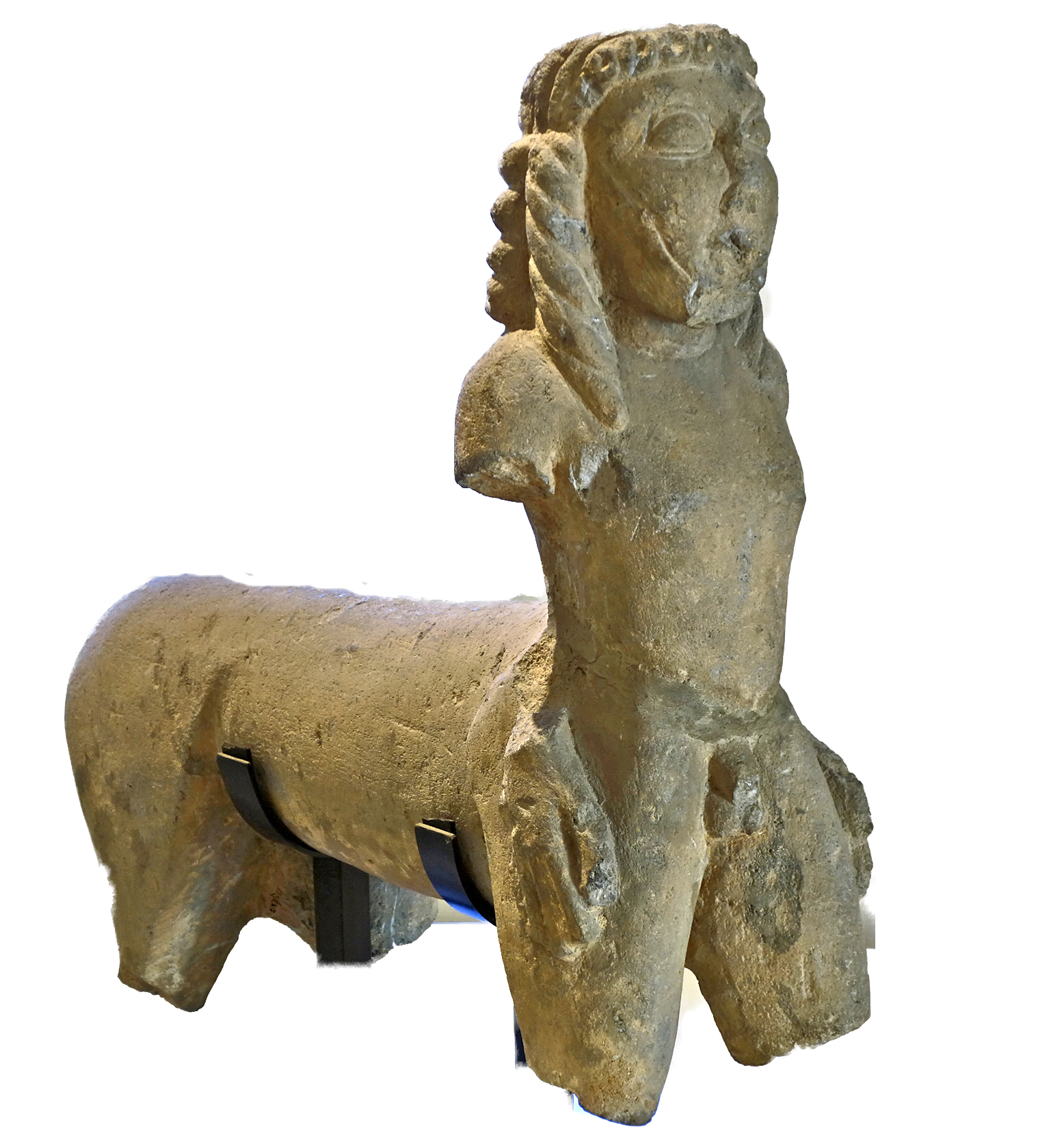Centaur Of Vulci on:
[Wikipedia]
[Google]
[Amazon]
 The Centaur of Vulci is a statue of the
The Centaur of Vulci is a statue of the
File:Centaure de Vulci 02.JPG
File:Centaure de Vulci 03.JPG
File:Centaure de Vulci 04.JPG
File:Centaure de Vulci 05.JPG
Etruscan __NOTOC__
Etruscan may refer to:
Ancient civilization
*Etruscan civilization (1st millennium BC) and related things:
**Etruscan language
** Etruscan architecture
**Etruscan art
**Etruscan cities
**Etruscan coins
**Etruscan history
**Etruscan myt ...
Orientalising period
The Orientalizing period or Orientalizing revolution is an art historical period that began during the later part of the 8th century BC, when art of the Eastern Mediterranean and the Ancient Near East heavily influenced nearby Mediterranean ...
, discovered in Vulci
Vulci or Volci ( Etruscan: ''Velch'' or ''Velx'', depending on the romanization used) was a rich Etruscan city in what is now northern Lazio, central Italy.
As George Dennis wrote, "Vulci is a city whose very name... was scarcely remembered, ...
near Etruscan Viterbo
Viterbo (; Central Italian, Viterbese: ; ) is a city and ''comune'' (municipality) in the Lazio region of Italy, the Capital city, capital of the province of Viterbo.
It conquered and absorbed the neighboring town of Ferento (see Ferentium) in ...
, now in the collection of the National Etruscan Museum
The National Etruscan Museum () is a museum dedicated to the Etruscan civilization, Etruscan and Falisci, Faliscan civilizations, housed in the Villa Giulia in Rome, Italy. It is the most important Etruscan museum in the world.
History
The villa ...
of Villa Giulia
The Villa Giulia is a villa in Rome, Italy. It is named after Pope Julius III, who had it built in 1551–1553 on what was then the edge of the city. Today it is publicly owned, and houses the Museo Nazionale Etrusco, a collection of Etruscan ...
in Rome
Rome (Italian language, Italian and , ) is the capital city and most populated (municipality) of Italy. It is also the administrative centre of the Lazio Regions of Italy, region and of the Metropolitan City of Rome. A special named with 2, ...
.
History
The statue was discovered in a private tomb in thenecropolis
A necropolis (: necropolises, necropoles, necropoleis, necropoli) is a large, designed cemetery with elaborate tomb monuments. The name stems from the Ancient Greek ''nekropolis'' ().
The term usually implies a separate burial site at a distan ...
of Poggio Maremma
The Maremma (, ; from Latin , "maritime and) is a geographical region located between Lazio and Tuscany, Central Italy. The biggest city is Grosseto.
The region, with a long history, is traditionally populated by the '' butteri'', mounted c ...
in Vulci Archaeological Park.
Description
Thisnenfro
Nenfro is a volcanic rock, gray tuff or banded trachyte (Brocchi) or leucite phonolite lava (Rosenbusch) with a soft but compact structure, typical of the Viterbo region that the Etruscans used in their sculptures of northern Lazio Cimini hills ...
statue dates from 590 to 580 BC. It represents a centaur
A centaur ( ; ; ), occasionally hippocentaur, also called Ixionidae (), is a creature from Greek mythology with the upper body of a human and the lower body and legs of a horse that was said to live in the mountains of Thessaly. In one version o ...
, a character from Greek mythology
Greek mythology is the body of myths originally told by the Ancient Greece, ancient Greeks, and a genre of ancient Greek folklore, today absorbed alongside Roman mythology into the broader designation of classical mythology. These stories conc ...
with a human torso and a horse's body.
The head, with an incised beard and hair falling into three braids on the upper legs, gives way to a brief chest and an equine body which lacks a tail. The arms are missing and also the legs below the knees; hands are visible on the hips.
References
{{reflist Etruscan mythology 6th-century BC sculptures Italian sculpture Etruscan sculptures Collection of the Villa Giulia Vulci Etruscan artefacts Statues in Italy Archaeological discoveries in Italy